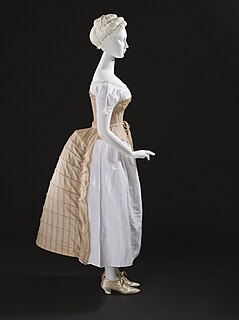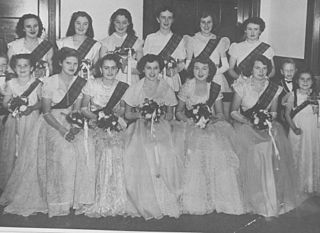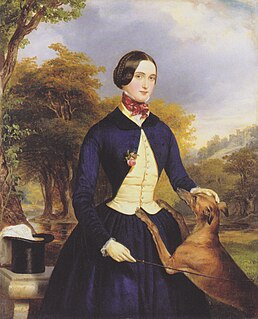 W
WVictorian fashion consists of the various fashions and trends in British culture that emerged and developed in the United Kingdom and the British Empire throughout the Victorian era, roughly from the 1830s through the 1890s. The period saw many changes in fashion, including changes in styles, fashion technology and the methods of distribution. Various movement in architecture, literature, and the decorative and visual arts as well as a changing perception of the traditional gender roles also influenced fashion.
 W
WArtistic Dress was a fashion movement in the second half of the nineteenth century that rejected highly structured and heavily trimmed Victorian trends in favour of beautiful materials and simplicity of design. It arguably developed in Britain in the early 1850s, influenced by artistic circles such as the Pre-Raphaelites, and Dress Reform movements. It subsequently developed into more specific categories such as Aesthetic Dress and Künstlerkleid on the continent.
 W
WThe bowler hat, also known as a billycock, bob hat, bombín (Spanish) or derby, is a hard felt hat with a rounded crown, originally created by the London hat-makers Thomas and William Bowler in 1849. It has traditionally been worn with semi-formal and informal attire. The bowler, a protective and durable hat style, was popular with the British, Irish, and American working classes during the second half of the 19th century, and later with the middle and upper classes in the United Kingdom, Ireland, and the east coast United States.
 W
WA bustle is a padded undergarment used to add fullness, or support the drapery, at the back of women's dresses in the mid-to-late 19th century. Bustles were worn under the skirt in the back, just below the waist, to keep the skirt from dragging. Heavy fabric tended to pull the back of a skirt down and flatten it. As a result a woman's petticoated skirt would lose its shape during everyday wear.
 W
WA corset is a garment worn to hold and train the torso into a desired shape, traditionally a smaller waist or larger bottom, for aesthetic or medical purposes, or support the breasts. Both men and women are known to wear corsets, though this item was for many years an integral part of women's wardrobes.
 W
WA debutante dress is a white ball gown, accompanied by white long gloves and pearls worn by girls or young women at their debutante cotillion. Debutante cotillions were traditional coming of age celebrations for eligible young ladies ready to be presented to society as ready for marriage.
 W
WVictorian dress reform was an objective of the Victorian dress reform movement of the middle and late Victorian era, led by various reformers who proposed, designed, and wore clothing considered more practical and comfortable than the fashions of the time.
 W
WA homburg is a semi-formal hat of fur felt, characterized by a single dent running down the centre of the crown, a wide silk grosgrain hatband ribbon, a flat brim shaped in a "pencil curl", and a ribbon-bound trim about the edge of the brim. It is traditionally offered in black or grey.
 W
WAn hourglass corset is a garment that produces a silhouette resembling an hourglass shape characterized by wide hips, narrow waist, and wide bust.
 W
WA mariner's cap, variations of which are known as skipper cap, Greek fisherman's cap, fiddler cap or Breton cap, Lenin cap and Mao cap, is a soft, flat-topped cap with a small visor, usually made from black or navy blue wool felt, but also occasionally from corduroy or blue denim. It is distinguished from similar caps, such as the peaked cap and maciejówka, by its soft, unstructured crown. It is often associated with seamanship and maritime settings, especially fishing, yachting and recreational sailing. It has become popular amongst the public in general, rather than staying isolated as an occupational hat. One example of it being put in prominence in popular culture was when it was worn by John Lennon during the British Invasion of the mid-1960s.
 W
WThe newsboy cap or newsie cap is a casual-wear cap similar in style to the flat cap.
 W
WA stock tie, or stock, is a tie worn around the neck of equestrians dressed formally for a hunt or certain competitive events. Most equestrian competition rules require it to be white. It is mandated attire for use in dressage and the dressage phase of eventing. Use of the stock tie also is seen in show jumping and fox hunting. The stock tie continues to be in fashion for equestrians.
 W
WA top hat is a tall, flat-crowned hat for men traditionally associated with formal wear in Western dress codes, meaning white tie, morning dress, or frock coat. Traditionally made of black silk or sometimes grey, the top hat emerged in Western fashion by the end of 18th century. Although it declined by the time of the counterculture of the 1960s, it remains a formal fashion accessory. A collapsible variant of a top hat, developed in the 19th century, is known as an opera hat.